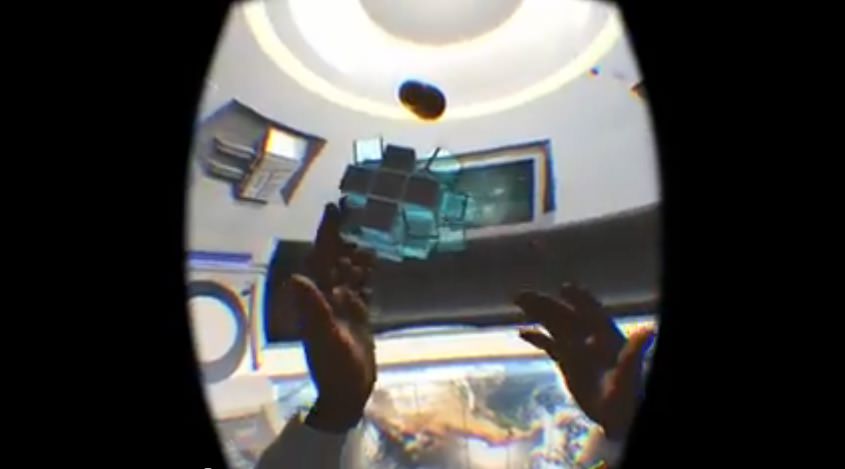With the ever-increasing affordability of technology, Virtual Reality is making its way into people’s homes. Systems like the Oculus Rift, and Sony’s PlayStation VR when it’s released next Fall, are becoming increasingly common. These systems, and others to come, will allow people to not only watch VR movies and play VR games, but also to explore space from the comfort of their own homes. This won’t be the only intersection of Virtual Reality and space, though.
NASA, as is often the case, has already blazed a trail when it comes to VR and space. They’ve been using VR to train astronauts for quite a while now. They have a whole lab dedicated to it, called the Virtual Reality Lab, located at the Johnson Space Center in Houston, Texas. At this facility, astronauts use VR to prepare them for working aboard the ISS.
NASA has flirted with other VR solutions as well. They used an Oculus Rift and a VR Treadmill combined with Mars footage from the Curiosity rover to create a virtual walk on the surface of Mars.
NASA’s use of VR is the most advanced around, naturally, but it’s not something most of us will ever encounter. For the rest of us, VR is making it’s way into our space-loving lives in other ways.
A company called Immersive Education has created a VR simulation of the Apollo 11 mission. It allows users to re-live the mission. You can look around the inside of the spacecraft, look out the window toward Earth, even watch and listen as astronauts walk on the surface of the Moon. The company promises “Historically accurate spacecraft interiors and exteriors.”
Here, Apollo astronaut Charlie Duke checks out the Apollo 11 VR on Oculus Rift.
Companies DEEP Inc. and Freedom 360 collaborated with the Canadian Space Agency to create a VR film called “The Edge of Space.” They used 360 degree cameras to record the view from a balloon that reached an altitude of 40km above Earth. Check out their video here. To get the real interactive effect, visit their page to download their app and view it.
Then there’s what I call virtual VR. Or you could call it “headsetless” VR, I guess. Though it lacks the immersion of full VR, it’s still cool. It’s a virtual planetarium from Escapist Games Limited, called Star Chart. Star Chart allows users to cruise through the Solar System and the Universe, checking out stars, nebulae, planets and other objects along the way.
This is just the beginning of VR’s entertainment and educational capabilities. With the growing affordability of VR, and the technological advancements to come, there’s going to some great implementations of VR technology for we space enthusiasts. I expect that in the next few years, we wannabe space explorers will be able to explore the surface of other worlds with VR, right in our own living rooms.

